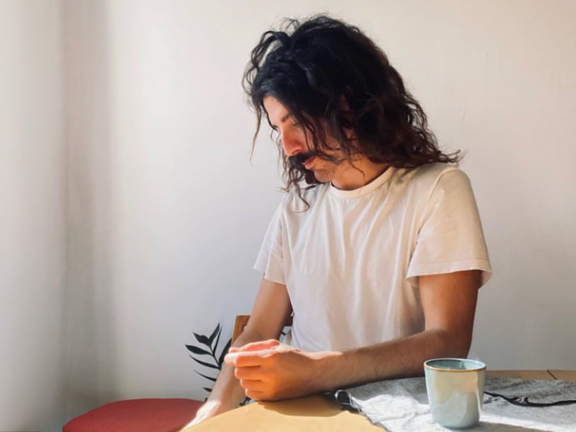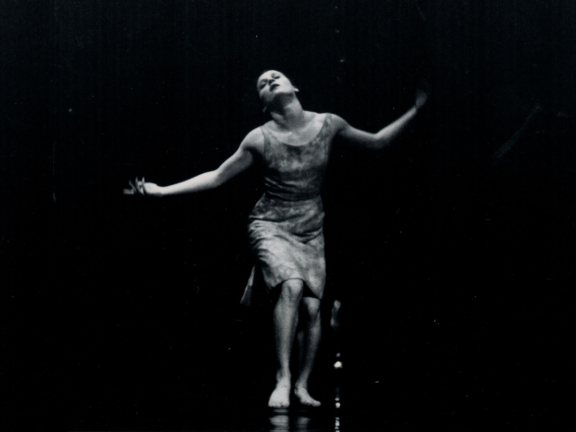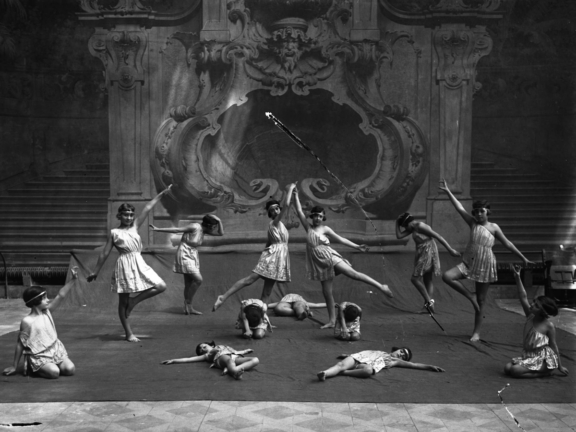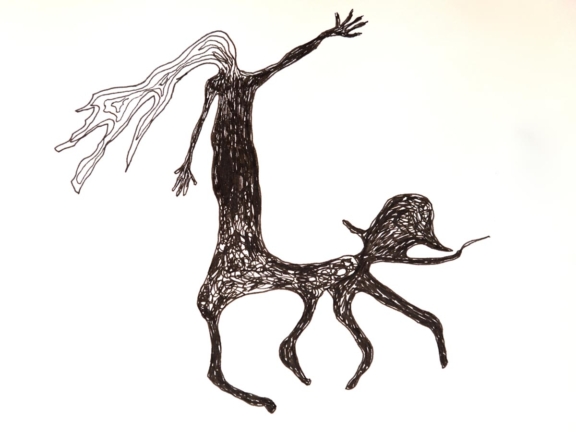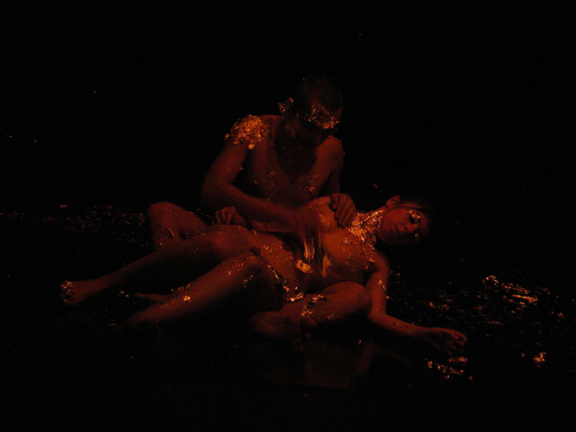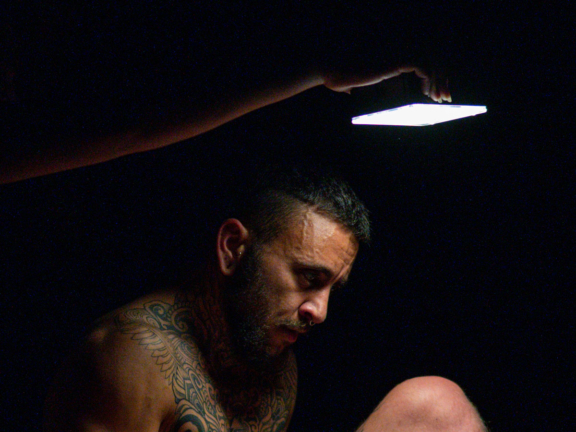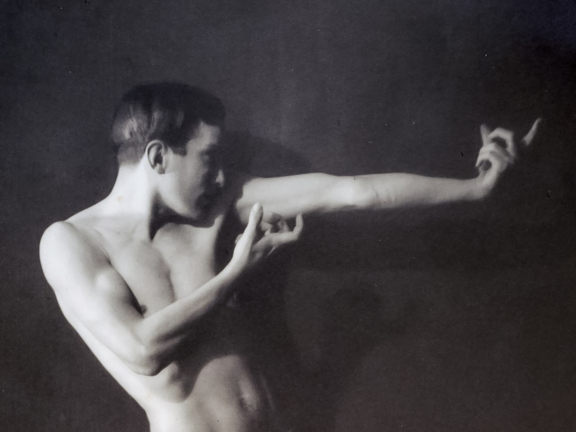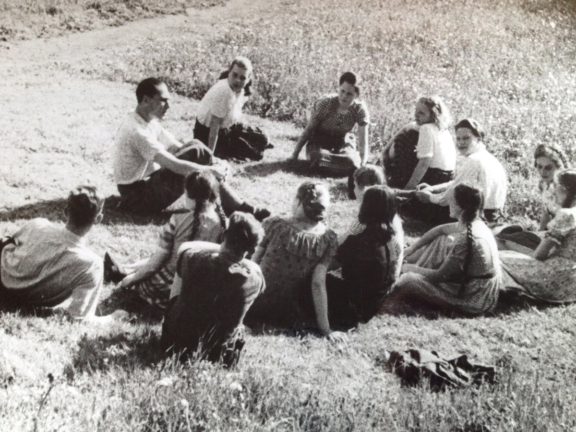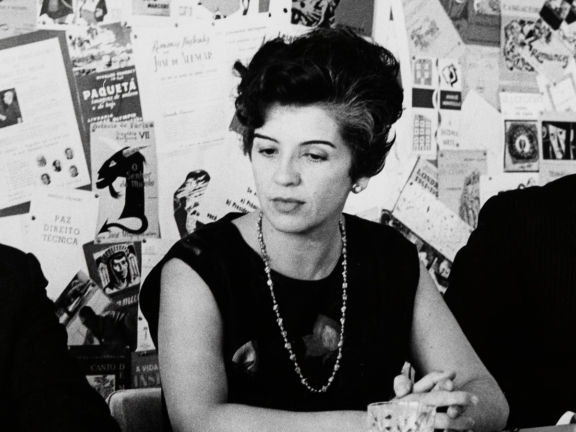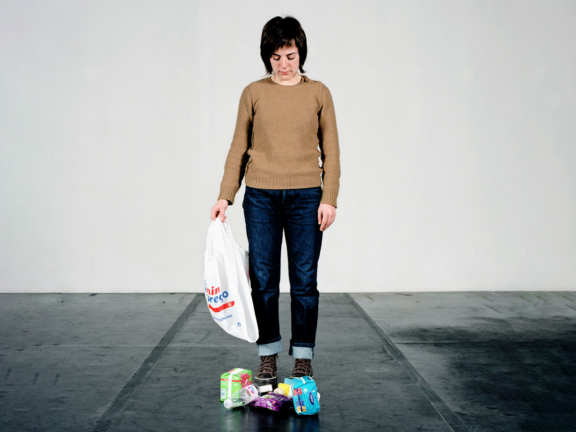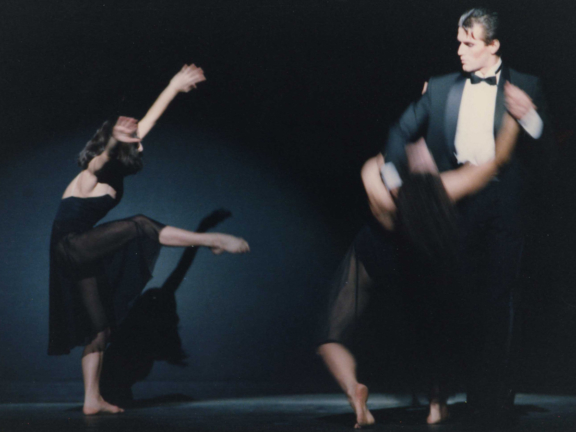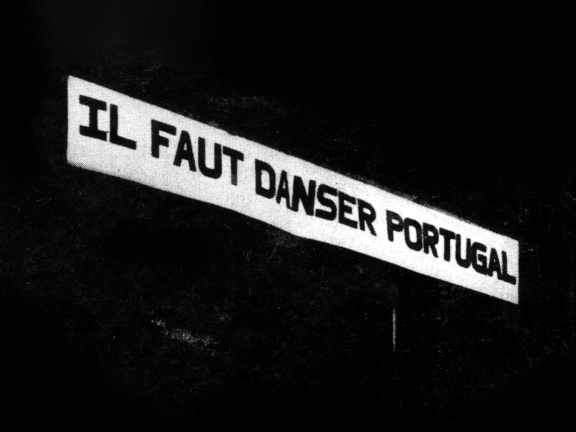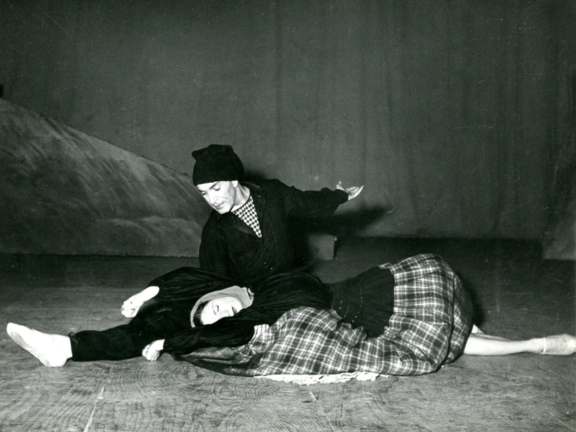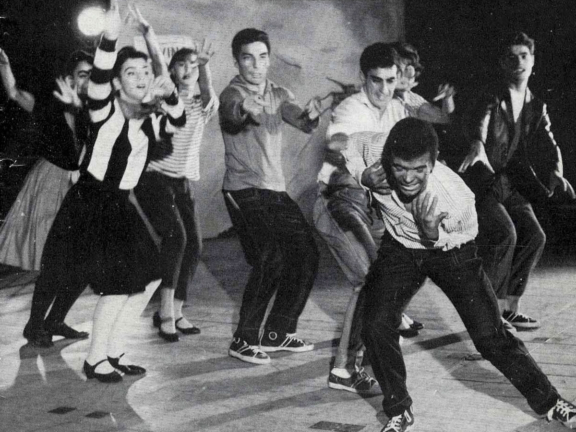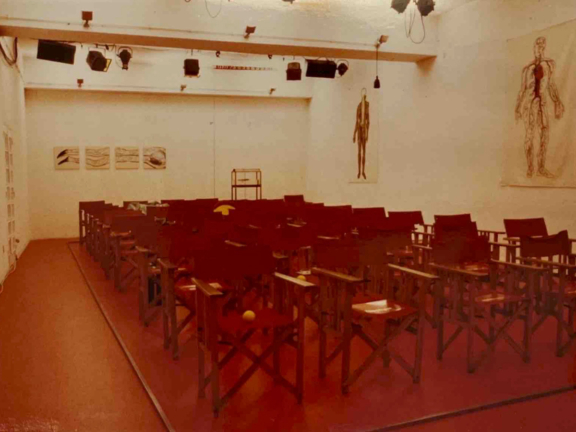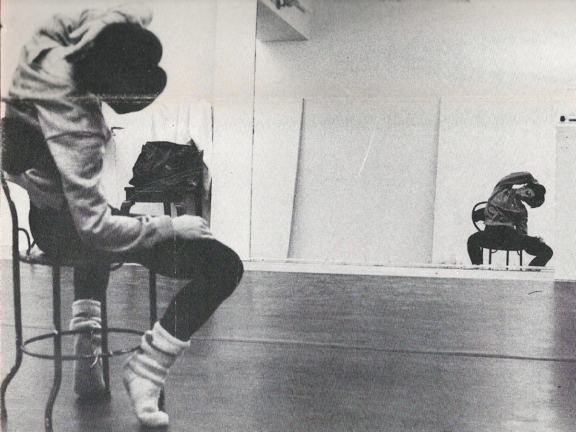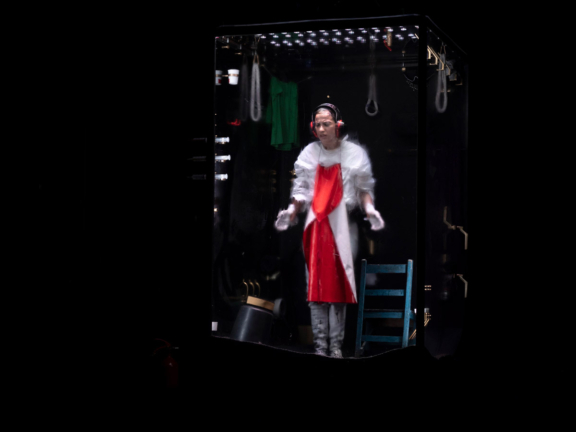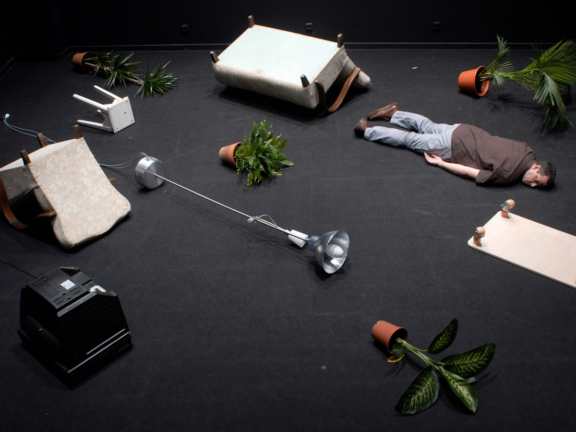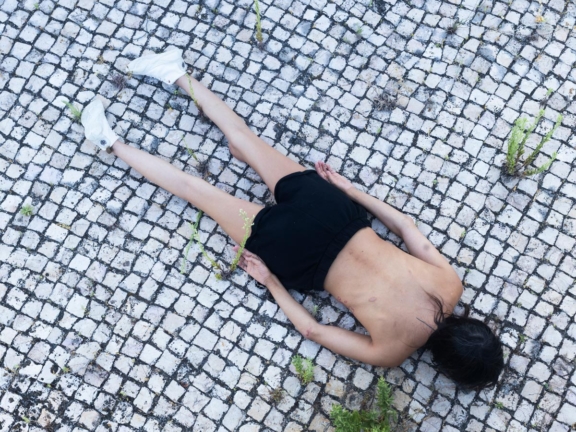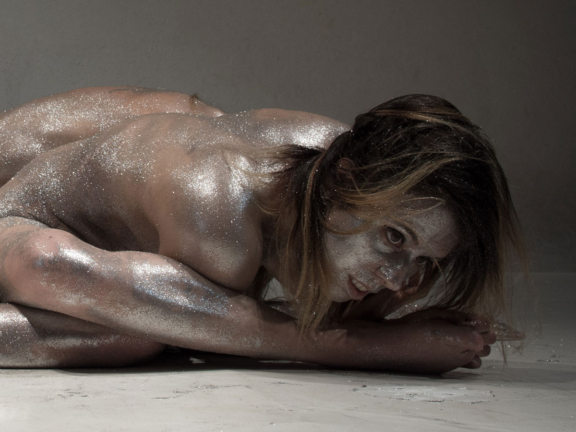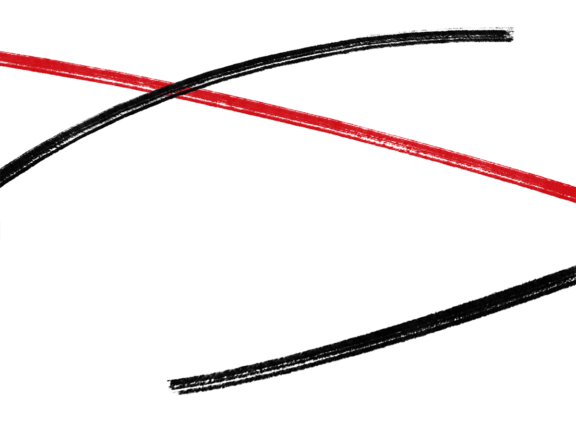
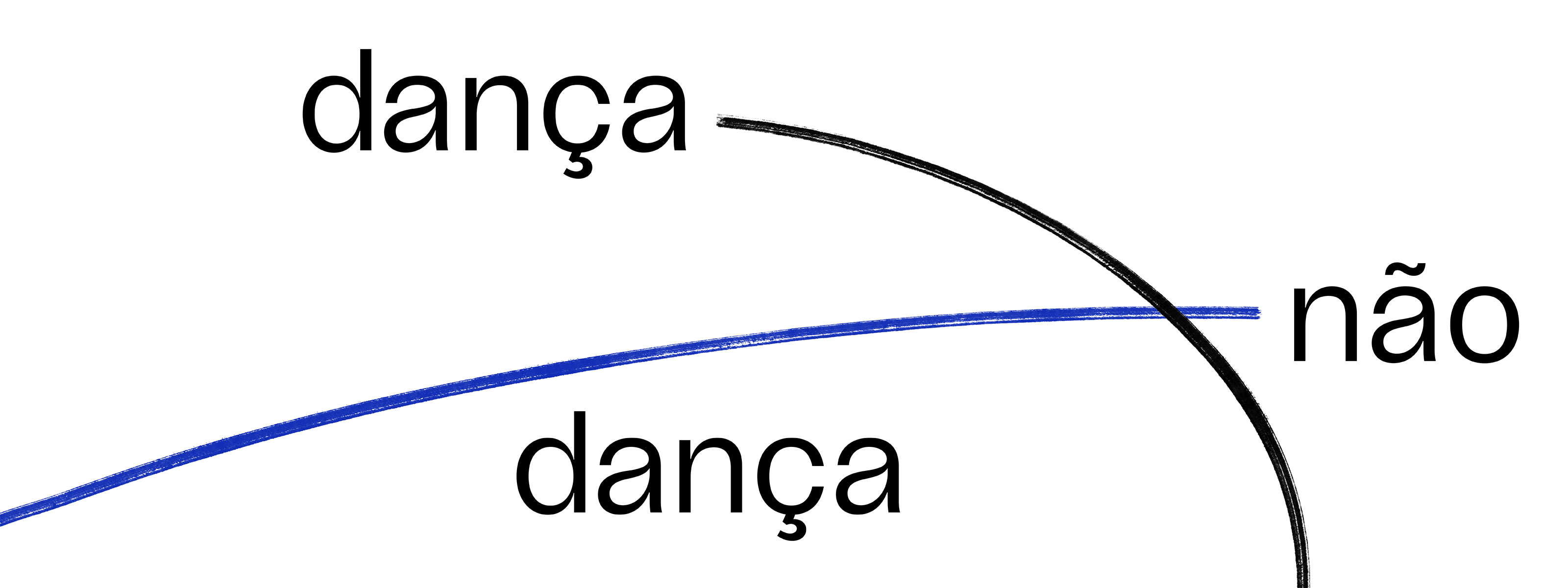
Dance not dance – archaeologies of new dance in Portugal
(Re)performances, films and talks
30 Oct 2023– 04 Feb 2024 / Free admission
This (re)performances, films and talks series offers an embodied journey through different manifestations of dance that have marked the 20th century and the beginning of the 21st century, aiming to frame what was referred to as Nova Dança Portuguesa [New Portuguese Dance] in the 1990s.
Curated by João dos Santos Martins, Ana Bigotte Vieira, Carlos Manuel Oliveira and Ana Dinger, this series is divided into ten thematic sessions, taking place at Calouste Gulbenkian Foundation between October 30, 2023, and February 4, 2024.
In each session, one, a pair or a set of choreographic works from different moments in time is performed, including some absolute premieres and the reenactment of past works which are not in circulation anymore, proposing relationships of proximity and distance between them. Their presentation depends on a new transmission process or original research based on scarce archival material.
Each performance is followed by a conversation about the work and the problems raised by its re-performance or transmission. The screening of three films entirely constructed from archival images and an international conference further amplify the ways by which these performances broaden our interpretation of the 20th century embodied experience.
Involving the main institutions responsible for transmitting dance within the country, the programme operates by displacement. What to transmit, how, and to whom? How does one transmit dance and movement? How to preserve what is perceived as intangible and immaterial? How does one maintain (or not) a repertoire or knowledge of the past in the performing arts in general and in dance in particular? How might dance’s supposed ephemerality contribute to a kind of illiteracy concerning dance as a specific art form?
To traverse more than a hundred years offers an overview of the 20th century which incorporates perspectives and relationships that are very often ignored, unrecognised and unaffirmed. “Before” and “after” cease to make sense as categories proper to a temporal linearity, to be replaced by a time that doesn’t elapse, rather remains, repeating itself through variations. To put two choreographic works in relation is, therefore, by means of their dances and corporealities, to invoke different historical periods, mixing them up and scrambling history itself in order to (re)open it.
Resulting from a research begun in 2016, this is the 7th iteration of the project For a Timeline to Be – genealogies of dance as an artistic practice in Portugal.
PROGRAMME
The century in 10 sessions and 15 dances
Free admission to all events, except for the performance Idiota, by Marlene Monteiro Freitas. Some events may require ticket collection on the same day at the box office.
Past events
30 Oct 2023 / The Portuguese do not have a body
In The Portuguese do not have a body, the place of the body in the Portuguese society is questioned, spanning an arc between early 20th-century modernism and the 1990s, when Nova Dança Portuguesa [New Portuguese Dance] emerged.
The article “Os Portugueses não têm corpo” [The Portuguese do not have a body] (1993) was written by Alexandre Melo after watching Talvez ela pudesse dançar primeiro e pensar depois [Perhaps she could dance first and think later] (1991) by Vera Mantero and Nossa Senhora das Flores [Our Lady of the Flowers] (1993) by Francisco Camacho. The unusual emergence of the body – present, sexualised, carnal – in the work of these artists led him to ask if the Portuguese “had a body”, given its absence from “the dominant discourses in Portuguese society”.
The work of Vera Mantero, revisited by the National Ballet of Portugal (CNB), constitutes a rare moment of intersection between this company and the protagonists of NDP [Nova Dança Portuguesa/New Portuguese Dance]. In the context of dance not dance, this work – an improvisation-based solo – is performed by Paulina Santos, CNB’s soloist ballerina, to whom Mantero transmits it. Within the same programme, Luís Guerra visits Almada Negreiros’ choreographic work with an original creation.
Articulating modernity with corporeality apropos of the emergence of NDP and the nervousness of history which these dances make visible, André Lepecki (2001) looks back to Almada Negreiros and the manifesto “Os Bailados Russos em Lisboa” [Ballets Russes in Lisbon], published in 1917 in the sole issue of the magazine Portugal Futurista. Expressed in it, is the desire to transform what was seen as an anachronistic Portuguese body into a modern European one. This manifesto is important insofar as it openly enunciates the “political-metamorphic desire” that modernity implies, insisting on the necessary “reconfiguration of the subject’s experience of corporeality” in any social and historical transformation.
The performances of Sergei Diaghilev’s company in Lisbon at the height of World War I, amidst the Revolution of Sidónio Pais in Portugal and the Russian Revolution, were inspiration for a series of pieces – O Bailado do Encantamento [The Ballet of Enchantment], A Princesa dos Sapatos de Ferro [The Princess with Steel Slippers] and O Jardim da Pierrete [Pierrette’s Garden] – with which Almada Negreiros affirmed himself as a choreographer and dancer. However, the desired general transformation via self-learning that he proposed in “Os Bailados Russos em Lisboa” would only occur, possibly, in the 1980s and 1990s, which is not to say that the modernist utopia of the 1910s was fulfilled. It should be remembered that modernity is a kinaesthetic regime: one is always late, one can always be more modern.
05 Nov 2023 / Free dances
In Free dances, the eurhythmics of the 1920s-1930s and artistic nudes of past and present are revisited. What might free dance look like today? How does today’s use of nudity on stage echo that from the start of the century?
In this session, an arc of over one hundred years is traced by revisiting the first decades of the 20th century and attending, in the present, a more or less recent pasts. An invitation was made to Sofia Neuparth to work with the Escola de Dança do Conservatório Nacional [Portuguese National Conservatory’s School of Dance], with the aim of providing young students access to the experience of freedom in dance by exploring practices linked to or inspired by eurhythmics and the free dances from the start of the century, in particular the Dalcroze method (whose introduction in Portugal, in the 1930s, was largely due to the work of women such as Cecil Kitkat, Sosso Doukas-Schau and Margarida de Abreu).
The dissemination of artistic nudes, also at the start of the century, served as a theme for yet another invitation aimed at artists who make use of the naked body in their work. Ana Borralho & João Galante were challenged to transmit one of their choreographies, and Gaya de Medeiros and Ary Zara to come up with a new creation. How does the nude body of today echo those from the beginning of the century? What form might free dance take today?
12 Nov 2023 / Revolution-school
Revolution-school reflects on what school is for and the place of art in the education of tomorrow.
The central question for this session is the way by which, in the interwar period – and in order not to go to war ever again –, a series of educational practices sought to change the world by training the body to be free. Révolution école 1918-1939 by Joanna Grudzinska is the first of three films in this programme – all using archival images – in which the camera, by close observation of the moving bodies in their own time, reveals the past by making it present.
This screening is followed by a conversation on art and education included in the commemorations of the centenary of the birth of Madalena Perdigão, bringing together various generations of artists and pedagogues, such as Maria Emília Brederode Santos, Ana Marques Gastão, and Patrícia Portela and João Fiadeiro.
15 Nov 2023 / Unequal subjects
Unequal subjects addresses the place of women in society in general and in Portugal in particular.
The two choreographically disparate pieces presented on this day are markedly feminine or feminist, notwithstanding being two decades apart, a period in which women rights and living conditions in Portuguese society have changed significantly. This juxtaposition is intended to evoke emancipatory movements made evident by the presentation of female soloists and solo female dance performers in 20th-century Portugal and elsewhere. It also reveals the social issues at the heart of these and so many other artists’ work who questioned and fought to improve the position of women in western society.
Olga Roriz and Cláudia Dias transmitted their works to other performers, each posing different questions: if in Lágrima [Tear] the challenge concerned the choice of the soloist from CNB – given the very charismatic inaugural performance by Elisa Ferreira from the Ballet Gulbenkian dance company –, in Visita Guiada [Guided Tour] the challenge for the reinterpretation of this work by someone other than Cláudia Dias was the personal and intimate nature of what is discursively shared while performing.
03 Dec 2023 / Il Faut Danser Portugal
Il Faut Danser Portugal questions the terms “Portugality” and “dance”, both as how they are envisioned by institutional power – particularly state power – and enacted by artists.
In 1984, António Olaio presented Il Faut Danser Portugal in the scope of Festival de Performance Portuguesa [Portuguese Performance Festival], organised by Egídio Álvaro at the Centre Pompidou to mark the 10th anniversary of the Portuguese revolution. In 1948, Francis Graça choreographed Nazaré, one of the most emblematic pieces by the Portuguese state dance company BPVG [grupo de Bailados Portugueses Verde Gaio], which he left shortly after, and one of the few that has been almost fully recorded, adapted for camera.
How far does the "Portugality" parodied by António Olaio in 1984 correspond to that stylised by Francis Graça in 1948? How do they both contribute to a study of the relationship between 20th-century Portuguese choreography and ideas of national identity or their criticism? Might the contrast between these two pieces foresee so many others that, declaredly Portuguese, flesh out a culture that is as iconoclastic as it is situated and limited? How can we understand transmission in dance by taking the way in which these works persist today as an example? What is transmitted when transmitting dance?
10 Dec 2023 / Ballet Gulbenkian: Variations
Ballet Gulbenkian: Variations provides a new life to a completely forgotten choreographic work, rediscovered in the archive of the now extinct but once well known Ballet Gulbenkian.
The final pages of Luís de Carvalho e Oliveira’s Problemas do Ballet em Portugal [Problems of Ballet in Portugal] discuss Ritmo Violento [Violent Rhythm], one of the first performances presented by the GEB [Grupo Experimental de Ballet/Experimental Ballet Group] in 1961, which at the time “impressed the audience greatly”. According to the author, by applauding, the audience “showed it was fundamentally non-racist and against discrimination, racial struggles and in favour of peaceful progress and well-being for whites and blacks”.
During the beginning of the Colonial War, the premiere of GEB, an initiative from CPB [Centro Português de Bailado/Portuguese Ballet Centre] included an urban-inspired piece in the style of West Side Story which critically portrayed a case of racial segregation, with one of the dancers in blackface and amplified rock ‘n’ roll music. A short excerpt of this piece was then recorded for the national news reel and recently rediscovered in the archives of the Portuguese Cinemateca. That same excerpt was included in Marco Martins’ film Um Corpo que Dança [A Dancing Body], which creates a connection between the history of the Ballet Gulbenkian and the recent history of Portugal.
From this short excerpt, Johnny Mandel’s music featured in the original performance and some reviews of the time, and with a critical attitude towards the colonial past and the representation of the black body, André Cabral accepted the challenge of re-imagining this piece in collaboration with final year undergraduate dance students from ESD [Escola Superior de Dança/Portuguese Higher School of Dance].
17 Dec 2023 / Expanded choreography
Expanded choreography revisits a collective project based on openness and experimentation, set in motion by Paula Massano in the 1980s.
ZOO&lógica: Instalação a Habitar por Coreografias [ZOO&logic: Installation to be Inhabited by Choreographies], performed in 1984, was an artistic gesture precursor of the openness and experimentation that, years later, would characterise Nova Dança Portuguesa [New Portuguese Dance]. Under the driving force of choreographer Paula Massano, some of the participants at the time, and her accomplices, were Margarida Bettencourt, Ana Rita Palmeirim, Filipa Mayer and Gagik Ismailian (dancers of Ballet Gulbenkian), Nuno Carinhas (scenic space), Constança Capdeville and Carlos Zíngaro (music), Paulo Graça (light design) and António Pinto Ribeiro (text).
Performed at Os Cómicos gallery in Lisbon, ZOO&lógica was the result of a collaborative process profoundly based on improvisation, which updates, in Portugal, certain propositions from postmodern American dance. Interdisciplinarity was a fundamental part of the process and the introduction of multiple viewing angles ridded the performance of a single frontal relationship with the audience. Space becomes the work’s protagonist, in the manner that it embraces bodies and objects, music and voices, and dances and texts within no particular order of hierarchy.
Almost forty years later, using scores, audio recordings and film footage, choreographers Margarida Bettencourt and Ana Rita Palmeirim return to ZOO&lógica together with Nuno Carinhas, Paulo Graça and Carlos Zíngaro. Performed by the final year students of the Escola Superior de Dança [Portuguese Higher School of Dance], the piece will reactivate the ideas proposed by the original work.
09 & 10 Jan + 04 Feb 2024 / Unearthing memories of dance
Unearthing memories of dance addresses the emergence of black bodies within the country’s dance history. It also provides the theme for revisiting the recent past and its colonial ghosts.
In Marlene Monteiro Freitas and Miguel Pereira’s pieces, even though diametrically opposed, coloniality is present not as a theme but as lived experience, with all the challenges that it entails for modern societies. The contrast between the scarcity of references to the colonial past in Portuguese dance archives and its everyday presence (in bodies, imaginaries and their emanations) will also be addressed in a discussion between Piny, Angela Guerreiro and Désirée Desmarattes. Moderated by Cristina Roldão, this talk will examine the conditions still faced today by researchers working on the presence of black bodies in various archives and contexts.
Monteiro Freitas’ work, collages of hundreds of iconographic references, is an exercise in memory composition, allowing for recognition and lack thereof. In Idiota [Idiot], the artist dialogues with the work of the also Cape Verdean painter Alex da Silva, who is dedicated to representing “creatures” in transfiguration. Monteiro Freitas gets inside a box which is both a place of imprisonment and liberation. In this space of imagination, the world’s memories intertwine, from the colonial violence of the World Fairs, where indigenous bodies were exhibited for curious western eyes, to the fantasy of circus and illusion.
The present moment, memory and its loss are the guiding threads of Miquelina e Miguel, where choreographer Miguel Pereira seeks to redeem a new, tragicomic relationship with his mother. Meanwhile, in the interstices, in their words and gestures, the brutal complexity of 20th-century Portugal, which Luís Trindade will later address in conversation, delicately unfolds. A delirious and caring encounter in which dance, the absurd and fragility are celebrated in a limitlessly free space. An attempt to counteract the passage of time and escape the inevitable, while Estado Novo dictatorship's light music mixes with Hollywood icons.
17 Jan 2024 / These bodies that occupy us
These bodies that occupy us brings into discussion preconceived ideas about the body, the organism, life, performance and dance.
The body, usually understood as the primary medium of dance, is also, and for that reason, the domain of the social forces that animate it. João Fiadeiro and Diana Niepce, though belonging to different artistic generations and disparate aesthetic worlds, share a common questioning of the body as matter and vehicle, proposing with their work the experimentation of its power and the reinvention of its possibilities.
Fiadeiro empties the body of the subject, opening its meaning to its relationship with the world – the stage, the scene, the living room of any house – broadening the perception of what bodies and things are capable of doing. Niepce uses the autonomy of her own body’s life to question the structures of power which are inherent to the subject in relation to itself, and to subjects in relation to one another.
Through the acknowledgement of the body as thing, their work questions the political, human and non-human subjectivity of the body, ascribing other materialities and modes of existence to it, while also reimagining the reality from which their dances emerge.
Collaboration


